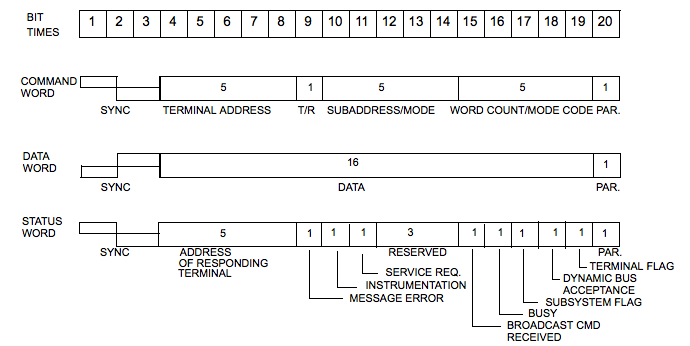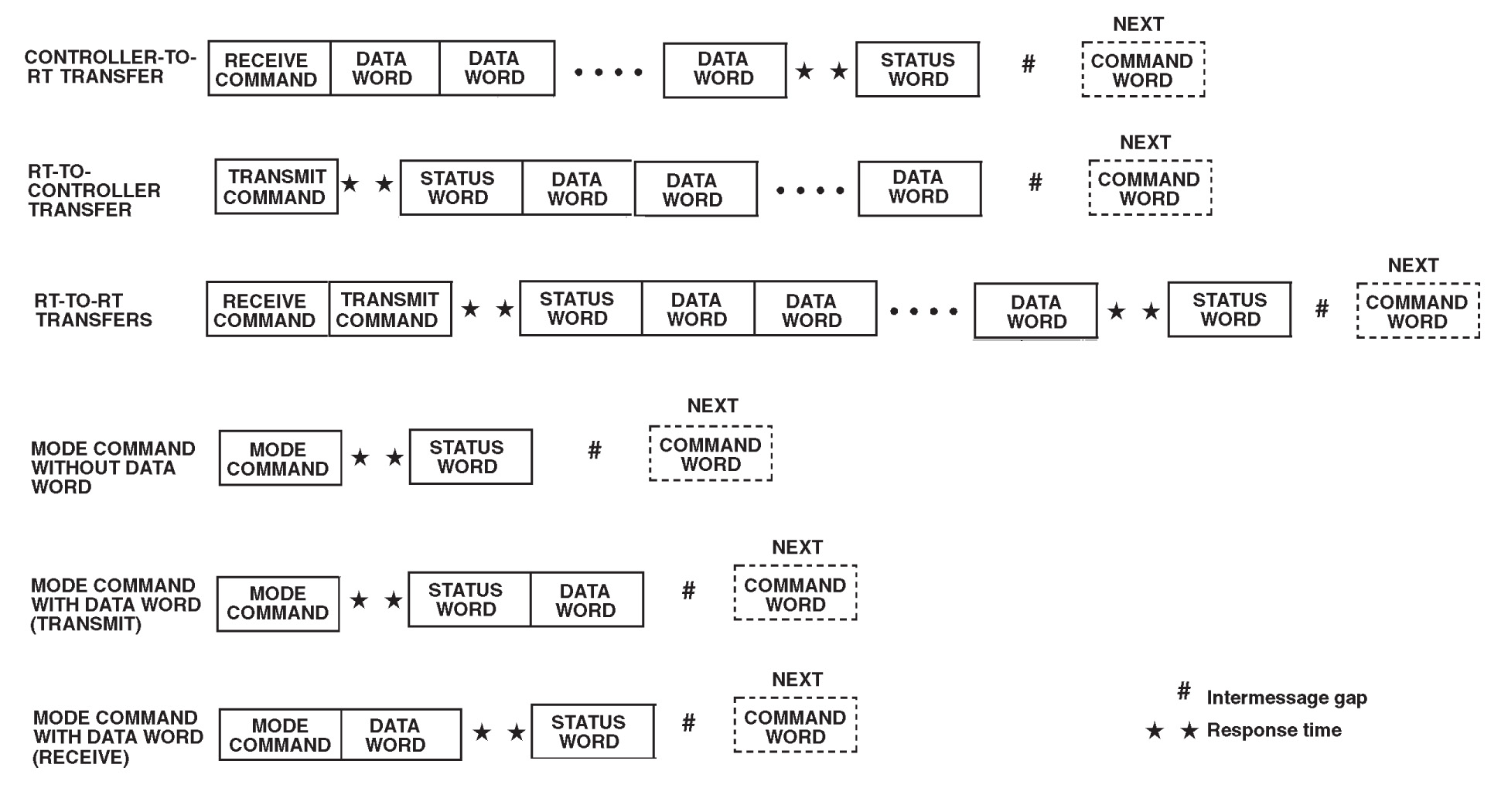This document offers a comprehensive insight into understanding of the MIL-STD-1553 message format, focusing on its structure, organization, and the significance of data words. MIL-STD-1553 is a widely used standard for data communication in avionics systems, ensuring reliable and efficient exchange of information. Understanding the intricacies of the message format is essential for engineers, developers, and professionals involved in avionics design and maintenance. This paper aims to shed light on the key components of the MIL-STD-1553 message format, including command words, status words, and data words, their organization, and their importance in avionics systems.

Introduction
The MIL-STD-1553 message format defines a structured approach for data communication between avionics subsystems. It consists of various components, each serving a specific purpose in the exchange of information. By following this standardized format, avionics systems can achieve reliable and efficient communication.
Command Words
Command words play a crucial role in initiating and controlling data transfer within the MIL-STD-1553 message format. They convey instructions from the bus controller to the remote terminal, specifying the desired operation. Command words include fields such as the subaddress, word count, and mode codes, which define the parameters of the data transfer.
Status Words
Status words provide feedback on the success or failure of the requested operation. These words are transmitted by the remote terminal to the bus controller, indicating the status of the data transfer. Status words contain information regarding error conditions, data validation, and system status, allowing for proper monitoring and error detection.
Data Words
Data words carry the actual payload or information to be transmitted between the avionics subsystems. These words can consist of various data formats, including discrete signals, analog values, and digital data. The number of data words transmitted depends on the word count specified in the command word. Data words are essential for accurate data exchange, enabling the avionics systems to function seamlessly.
Organization and Structure
The MIL-STD-1553 message format follows a specific organization and structure to ensure efficient and error-free communication. The message is typically divided into a series of time slots, with each slot reserved for a specific function. The bus controller initiates the transmission by sending a command word, followed by the remote terminal’s response in the form of a status word. The actual data transfer occurs after the status word, with data words transmitted between the bus controller and remote terminal.

Importance in Avionics Systems
Understanding the MIL-STD-1553 message format is of utmost importance in avionics systems for several reasons:
- Reliable Data Communication: The standardized message format ensures reliable data communication between avionics subsystems. By adhering to this format, systems can exchange information accurately, reducing the risk of errors and misinterpretation.
- System Integration: The MIL-STD-1553 message format facilitates seamless integration of different avionics subsystems, allowing for coordinated operations and effective data sharing. It enables various subsystems to work together as a cohesive unit, enhancing overall system performance.
- Error Detection and Correction: The structured message format includes error detection and correction mechanisms, such as parity bits, which help identify and rectify data transmission errors. This ensures data integrity and system reliability.
- Efficient Resource Utilization: By organizing data transfer into time slots, the MIL-STD-1553 message format optimizes resource utilization, allowing for efficient use of the communication bus and minimizing data transfer delays. This helps in improving overall system efficiency and reducing bottlenecks in data communication.
- Standardization and Interoperability: The MIL-STD-1553 message format provides a standardized approach to data communication in avionics systems. This promotes interoperability, allowing different subsystems from various manufacturers to communicate effectively and seamlessly. It simplifies system integration, maintenance, and upgrades.
Future Developments
As avionics technology continues to advance, there are ongoing developments in the MIL-STD-1553 message format to meet evolving industry needs:
- Increased Data Rate: With the growing demand for higher bandwidth in avionics systems, efforts are being made to enhance the data rate supported by the MIL-STD-1553 message format. This enables faster and more efficient data transfer, accommodating the requirements of modern avionics applications.
- Enhanced Error Detection and Correction: Ongoing research focuses on improving error detection and correction techniques within the MIL-STD-1553 message format. This includes the exploration of advanced error-checking algorithms and techniques to further enhance data integrity and system reliability.
- Integration with Other Protocols: In certain cases, the MIL-STD-1553 message format may need to be integrated with other communication protocols to meet specific system requirements. Future developments aim to enable seamless interoperability between MIL-STD-1553 and other protocols, expanding the capabilities of avionics systems.
Conclusion
The MIL-STD-1553 message format is a structured approach to data communication in avionics systems, consisting of command words, status words, and data words. This format ensures reliable and efficient exchange of information, enabling seamless integration of avionics subsystems. Understanding the organization and structure of the message format is crucial for effective design, implementation, and maintenance of avionics systems.
The MIL-STD-1553 message format facilitates reliable data communication, system integration, error detection and correction, efficient resource utilization, and standardization. Ongoing developments focus on increasing data rate, enhancing error detection and correction, and integrating with other protocols. By staying informed about the MIL-STD-1553 message format, avionics professionals can leverage its benefits and contribute to the advancement of avionics technology, ensuring the safety, efficiency, and reliability of avionics systems.
In conclusion, the MIL-STD-1553 message format serves as the foundation for reliable and efficient data communication in avionics systems. Understanding its structure, components, and significance is essential for avionics professionals involved in system design, integration, and maintenance. By adhering to the standardized message format, avionics systems can achieve seamless integration, efficient resource utilization, and reliable data exchange. Ongoing developments aim to enhance data rate, error detection and correction, and interoperability with other protocols, further improving the capabilities of avionics systems in the future.





